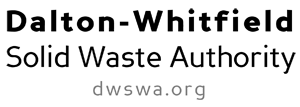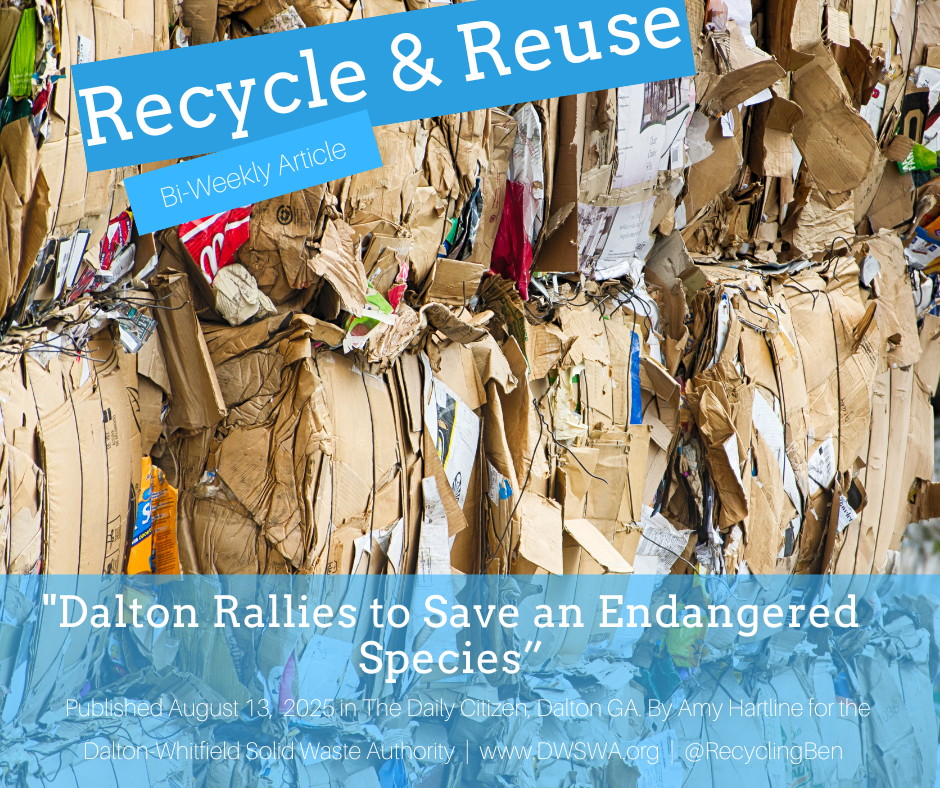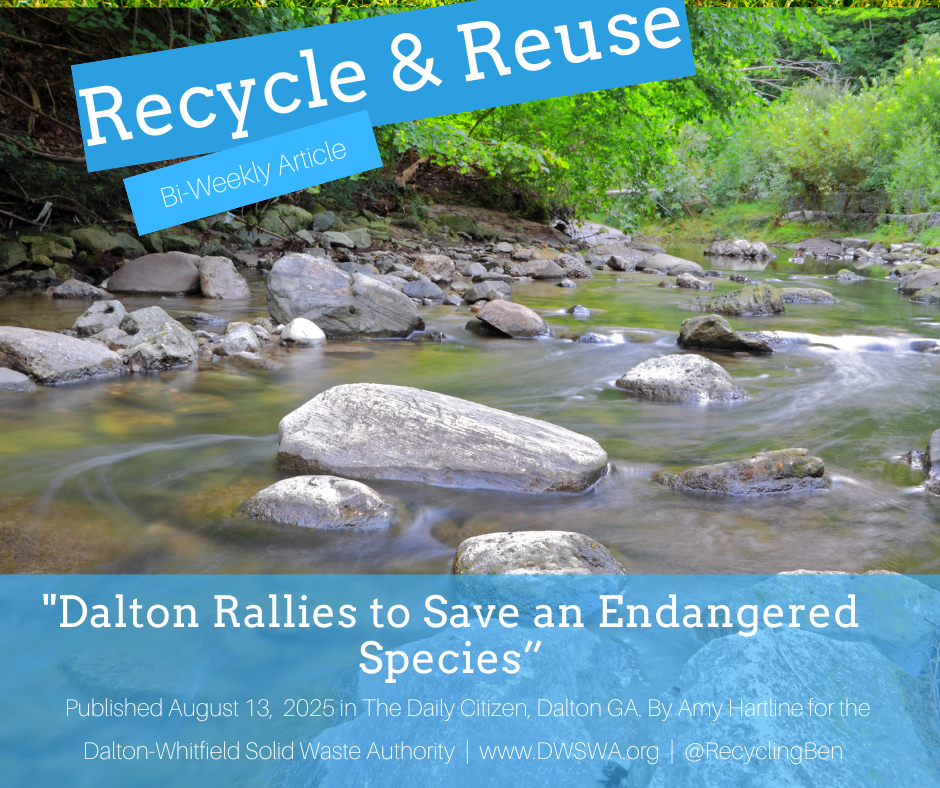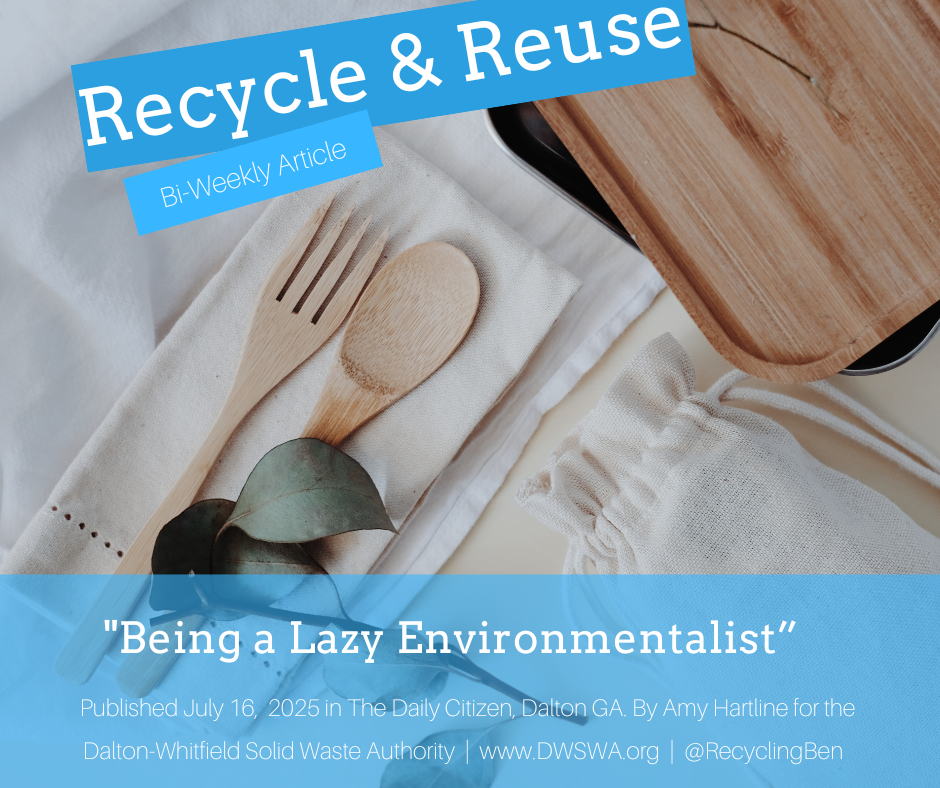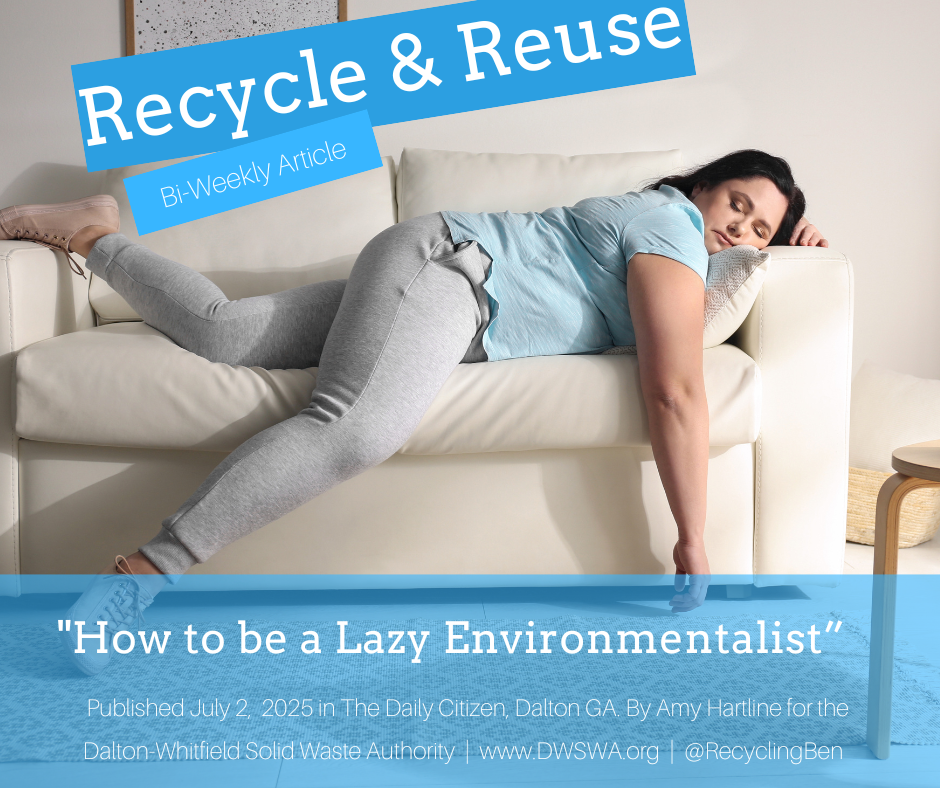Myth-busting for Recyclers
/Plastic bottles and jugs can actually be recycled with the bottle cap screwed on. And, it’s ok to leave the label on the outside of the bottle too. Just make sure the bottle or jug is empty.
You’re filling a bag up with plastic water bottles to take to the Convenience Center nearest you for recycling. You know that water bottles are recyclable, but when you reach for the dish soap bottle you pause. Is that really recyclable? It’s plastic, it has a little recycling symbol on it - but it’s not for water. Rest assured please do put that soap dispenser bottle in your recycling bag or bin because it is totally recyclable in our community.
Recycling can be really confusing! Unfortunately, this leads to misconceptions or myths about what can or cannot be recycled, and how to properly prepare items to be recycled. And considering that recycling services vary greatly from city to city, if you ask a friend who just moved here from out of state, they may well steer you in the wrong direction. Good intentions notwithstanding.
Recycling is the process of taking things we are done using and sending them to manufactures that can make new products out of them. Recycling is awesome! It helps us reuse materials so that virgin or raw materials are not wasted. And, because the recycled item has already been processed using it instead of virgin materials saves energy, water, and more during the manufacturing of all the new items.
Not to mention recycling also creates jobs. According to the 2015 Economic Impact Study of the U.S. Based Scrap Recycling Industry prepared by the Institute for Scrap Recycling Industries, Inc. recycling the activities of the scrap recycling industry generate nearly $105 billion annually in economic benefits in the U.S. This includes direct jobs, impacts to suppliers, and induced benefits (like employees shopping at a local store).
As great as recycling is, it doesn’t work if we continue to be confused about what goes in the recycling collection bin. Putting the wrong thing in the bin can cause problems for the people that are sorting the recyclables from your home. Sometimes individuals put in the wrong things because they really genuinely don’t know they’re doing something wrong. Other times it’s because people are just “wish-cycling”. Yes, they place an item in the recycling bin unsure that it goes in but hopeful that the recycling center can figure it out and recycle it in the end.
Truth is, if you put a garden hose or plastic patio chair in a Convenience Center recycling container designated for plastic bottles and jugs you are actually causing contamination. This means more work for the recycling center team which has to pick out your chair, or another non-recyclable item, and put it in the landfill. Wish-cycling fail!
To help you recycle better here are some myth busters that will shed some light on how to, and what to, recycle in our community.
Myth: You need to remove all labels from bottles, jars, and cans before recycling.
Fact: You do not need to remove labels from recyclable containers. Whether it’s a plastic bottle or bi-metal soup can, the labels are removed during the recycling process.
Myth: You can’t recycle pizza boxes.
Fact: You can recycle cardboard pizza boxes that are empty and clean. This means there isn’t any food, cheese, excessive grease, liners, or plastic pieces inside. When in doubt put the box in the trash or shred it for the compost pile.
Myth: Plastic bottle caps are not recyclable.
Fact: Plastic bottle caps or lids, pumps, and sprayers, are all recyclable when you leave them attached to the bottle or jug you are recycling. Lids that are attached to the original container are less likely to get lost during the recycling process.
Myth: You must remove staples, and paper clips from office paper.
Fact: Small metal pieces like staples, paper clips, and the spiral from spiral bound notebooks are removed during the recycling process. Large metal pieces like three ring binder rings are more difficult to handle. If you have a binder full of paper, it’s best to remove the paper from the binder, then reuse or dispose of the binder.
Myth: Electronic devices can be thrown in the garbage.
Fact: Electronic devices like smart phones, video game consoles, digital cameras, and laptops are actually recyclable and in some cases, reusable. Electronics recycling is available year-round at the Old Dixie Hwy. Landfill and Convenience Center. Some retail locations also offer electronics recycling. Items accepted vary by location so it’s best to call ahead.
